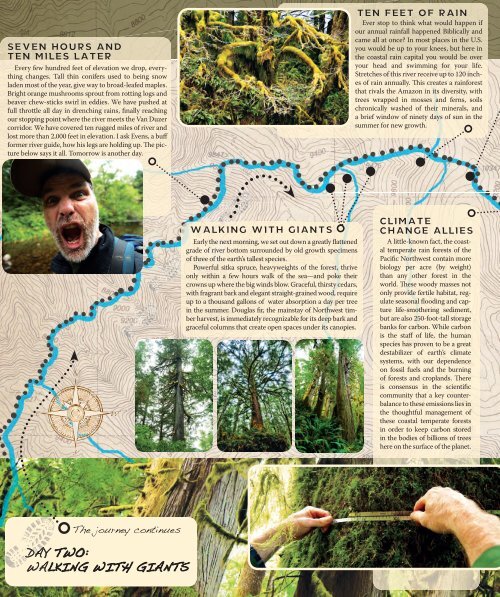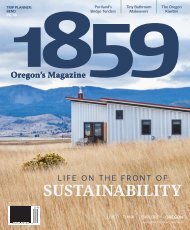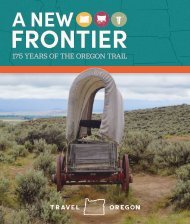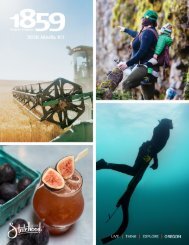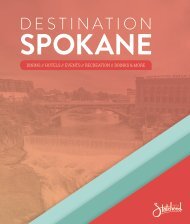Create successful ePaper yourself
Turn your PDF publications into a flip-book with our unique Google optimized e-Paper software.
Seven Hours and<br />
Ten Miles Later<br />
Every few hundred feet of elevation we drop, everything<br />
changes. Tall thin conifers used to being snow<br />
laden most of the year, give way to broad-leafed maples.<br />
Bright orange mushrooms sprout from rotting logs and<br />
beaver chew-sticks swirl in eddies. We have pushed at<br />
full throttle all day in drenching rains, finally reaching<br />
our stopping point where the river meets the Van Duzer<br />
corridor. We have covered ten rugged miles of river and<br />
lost more than 2,000 feet in elevation. I ask Evens, a buff<br />
former river guide, how his legs are holding up. The picture<br />
below says it all. Tomorrow is another day.<br />
Ten Feet of Rain<br />
Ever stop to think what would happen if<br />
our annual rainfall happened Biblically and<br />
came all at once? In most places in the U.S.<br />
you would be up to your knees, but here in<br />
the coastal rain capital you would be over<br />
your head and swimming for your life.<br />
Stretches of this river receive up to 120 inches<br />
of rain annually. This creates a rainforest<br />
that rivals the Amazon in its diversity, with<br />
trees wrapped in mosses and ferns, soils<br />
chronically washed of their minerals, and<br />
a brief window of ninety days of sun in the<br />
summer for new growth.<br />
Walking with Giants<br />
Early the next morning, we set out down a greatly flattened<br />
grade of river bottom surrounded by old growth specimens<br />
of three of the earth’s tallest species.<br />
Powerful sitka spruce, heavyweights of the forest, thrive<br />
only within a few hours walk of the sea—and poke their<br />
crowns up where the big winds blow. Graceful, thirsty cedars,<br />
with fragrant bark and elegant straight-grained wood, require<br />
up to a thousand gallons of water absorption a day per tree<br />
in the summer. Douglas fir, the mainstay of Northwest timber<br />
harvest, is immediately recognizable for its deep bark and<br />
graceful columns that create open spaces under its canopies.<br />
Climate<br />
Change Allies<br />
A little-known fact, the coastal<br />
temperate rain forests of the<br />
Pacific Northwest contain more<br />
biology per acre (by weight)<br />
than any other forest in the<br />
world. These woody masses not<br />
only provide fertile habitat, regulate<br />
seasonal flooding and capture<br />
life-smothering sediment,<br />
but are also 250-foot-tall storage<br />
banks for carbon. While carbon<br />
is the staff of life, the human<br />
species has proven to be a great<br />
destabilizer of earth’s climate<br />
systems, with our dependence<br />
on fossil fuels and the burning<br />
of forests and croplands. There<br />
is consensus in the scientific<br />
community that a key counterbalance<br />
to these emissions lies in<br />
the thoughtful management of<br />
these coastal temperate forests<br />
in order to keep carbon stored<br />
in the bodies of billions of trees<br />
here on the surface of the planet.<br />
The journey continues<br />
DAY TWO:<br />
WALKING WITH GIANTS


